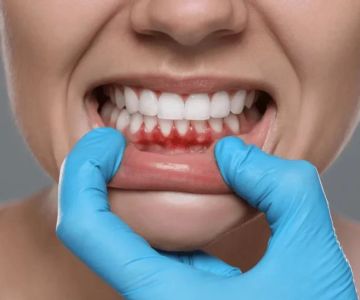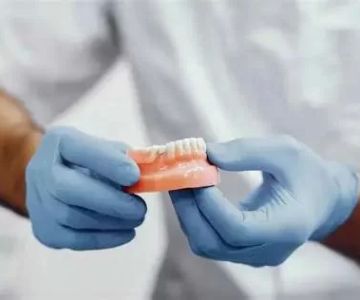What is a Sinus Lift in Dental Implant Surgery? Understanding the Procedure
- 1. Introduction to Sinus Lift
- 2. Why is a Sinus Lift Necessary for Dental Implants?
- 3. The Sinus Lift Procedure: Step by Step
- 4. Recovery and Aftercare for Sinus Lift
- 5. Real-Life Examples of Successful Sinus Lifts
- 6. Alternatives to Sinus Lift in Dental Implants
- 7. Conclusion: Is a Sinus Lift the Right Option for You?
1. Introduction to Sinus Lift
A sinus lift, also known as sinus augmentation, is a dental procedure used to prepare the upper jaw for dental implants. The procedure involves lifting the sinus membrane and adding bone to the area to create a stronger foundation for implants. This surgery is often performed when there is insufficient bone in the upper jaw, particularly in the back areas, to support a dental implant.
2. Why is a Sinus Lift Necessary for Dental Implants?
For dental implants to be effective, they need to be anchored into the bone. In some cases, the upper jaw lacks sufficient bone density or height to support implants due to bone loss from injury, disease, or age. A sinus lift procedure is performed to add bone to the jaw in this area, increasing the chances of implant success.
3. The Sinus Lift Procedure: Step by Step
The sinus lift procedure is typically performed under local anesthesia, and the surgeon may opt for sedation for more complex cases. The process begins by making a small incision in the gum to access the jawbone. The sinus membrane is carefully lifted, and bone material, either from the patient’s own body or a donor, is inserted into the space. The bone is left to heal, usually taking several months, before dental implants can be placed.
4. Recovery and Aftercare for Sinus Lift
After a sinus lift, patients may experience some swelling, discomfort, or mild bleeding in the area. Pain management is typically provided, and the recovery period can last several months. It is crucial to follow the dentist’s aftercare instructions, including avoiding vigorous activity and maintaining good oral hygiene, to ensure proper healing and reduce the risk of infection.
5. Real-Life Examples of Successful Sinus Lifts
One example is Emily, a 45-year-old woman who had significant bone loss in her upper jaw after several years of tooth decay. After undergoing a sinus lift, she was able to receive dental implants that significantly improved her bite and appearance. Another example is John, who had a traumatic injury that left him with insufficient bone for implants. His sinus lift was a success, and he regained his confidence with a full smile.
6. Alternatives to Sinus Lift in Dental Implants
While sinus lift surgery is highly effective, some patients may be candidates for alternative treatments. For instance, bone grafting techniques, zygomatic implants, or the use of shorter implants may be used in certain situations where a sinus lift is not suitable. Your dentist will assess your specific case and recommend the best treatment option.
7. Conclusion: Is a Sinus Lift the Right Option for You?
A sinus lift is a proven and reliable procedure for those needing dental implants but lacking sufficient bone in the upper jaw. It can improve the long-term success of implants and restore both function and aesthetics. If you're considering a sinus lift for your dental implants, reach out to a trusted provider at Dentistry Toothtruth to learn more about how this procedure can benefit you and get personalized advice.







 Westgate Dental Arts3.0 (2 review)
Westgate Dental Arts3.0 (2 review) Coventry Family Dental4.0 (247 review)
Coventry Family Dental4.0 (247 review) Familia Dental3.0 (1028 review)
Familia Dental3.0 (1028 review) Dr. Daniel S. Fife, DDS4.0 (31 review)
Dr. Daniel S. Fife, DDS4.0 (31 review) Dentistry At Suburban Square: Michael I. Wollock, DMD4.0 (1228 review)
Dentistry At Suburban Square: Michael I. Wollock, DMD4.0 (1228 review) Comfort Care Dental4.0 (1156 review)
Comfort Care Dental4.0 (1156 review) The Importance of Oral Health Education During Pregnancy for a Healthy Pregnancy
The Importance of Oral Health Education During Pregnancy for a Healthy Pregnancy Why Skipping Dental Checkups Can Lead to Bigger Oral Health Problems
Why Skipping Dental Checkups Can Lead to Bigger Oral Health Problems Best Tips for Brushing Your Teeth Properly for Healthy Gums: Essential Techniques for Oral Health
Best Tips for Brushing Your Teeth Properly for Healthy Gums: Essential Techniques for Oral Health Advantages of Porcelain Dental Restorations
Advantages of Porcelain Dental Restorations How Can Diabetes Cause Tooth and Gum Problems? Preventing and Managing Oral Health Issues
How Can Diabetes Cause Tooth and Gum Problems? Preventing and Managing Oral Health Issues Healthy Habits for Promoting Good Oral Health and Hygiene: Tips for a Healthy Smile
Healthy Habits for Promoting Good Oral Health and Hygiene: Tips for a Healthy Smile